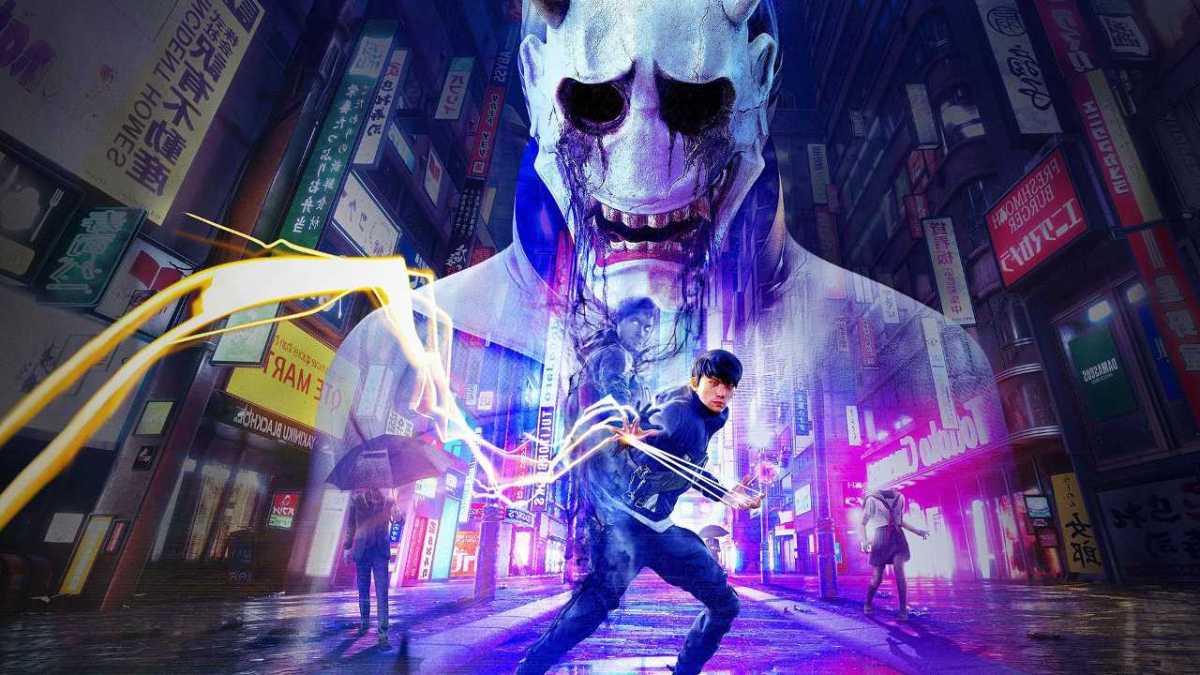Ghostwire: Tokyo on PC
Since it was announced in 2019, Ghostwire: Tokyo has sat in an odd place. Even though it looked really good and had some interesting concepts, there just wasn’t really any indication of what type of game it would be.
Even with the recent previews, the looming questions regarding what the draw of its gameplay loop would be compared to other action-adventure titles was still hovering overhead, menacingly. Thankfully, after actually getting to play it, I can say for certain that Ghostwire: Tokyo more than lives up to the hype.
Ghostwire: Tokyo starts right in the thick of chaos, as protagonist Akito not only finds himself possessed by a spirit, KK, but also seems to be the last human whose soul isn’t trapped by the invading enemies, called The Visitors. In order to stop these beings from taking over the mortal plane, the two must work together, using elemental powers, known as Ethereal Weaving, to defeat enemy spirits while also setting the good ones free and returning trapped humans to their real bodies.

Combat seems simple at first, as attacks are mostly different styles of shooting projectiles at enemies, with a few other buffs and traps included as well. As Akito levels up and unlocks more abilities and increases attack power, the flow of fighting falls into place.
Nothing feels quite as satisfying as switching between different elemental attacks while also timing out the incoming punches and projectiles in order to perform a perfect block. Fair warning that it’ll take a bit before you can really get used to the rhythm of all this.
While progress, in general, starts out a little slow, as the game features a lot of tutorials and setup, it isn’t too long before Akito and KK are able to explore the streets of Tokyo at their leisure. And boy, is there a lot to explore.
Movement isn’t limited to simply the streets of Tokyo, as buildings can be traversed and undergrounds can be explored. This results in some breathtaking views and interesting locals that you wouldn’t get to explore otherwise, including a creepy abandoned subway station.
I found myself constantly in awe of just how much freedom Ghostwire: Tokyo gave in terms of exploring, as areas that seemed like they’d be off-limits often held treasures and secrets to take advantage of. Just about every time a new area opened up with a skyscraper, an immediate thought of “can I climb that” came to mind. More often than not, the answer was yes.
To access all of these amazing sites, Ghostwire: Tokyo uses Torii Gates as a means of progression. Like a synchronization point in Assassin’s Creed, cleansing these gates clears the dangerous fog that fills the streets, unlocking new points of interest and missions when cleared.

While that mechanic doesn’t break the mold, having to go to Torii Gates to progress the map made progression feel more natural. Forcing a little bit of exploration led to finding a lot of unique side quests that I may have otherwise passed over.
Despite being optional, the side missions that make up Ghostwire: Tokyo are where the game really shines. Alongside rewarding Akito with currency and valuable items that lead to upgrades, these quests also tell some extraordinary stories based on Japanese folklore.
Those stories range from helping Yokai spirits find relics to trying to stop a murderous doll from claiming another victim. And yes, all of this is a little checklist-y, as most objectives are simply go here and get that or defeat this group of enemies.
What’s funny is that even with the fetch quest and checklist structure that was present in most quests, I often found myself knocking out a handful and not even realizing a full eight hours had passed since I started playing.
A lot of this has to do with the atmosphere present in Ghostwire: Tokyo, as it does a great job at drawing you in, especially when it comes to its music. Even though it isn’t a horror game, the game features beautiful and bone-chilling music that sets the scene while navigating the desolate streets of Tokyo.
This leads to some really tense moments and even a few jump-scares, depending on where your focus is. I’m not proud to admit that a few Last of Us Part 2 workbench-related scenarios occurred in the game that made me need to check my underwear.
With that said, Ghostwire: Tokyo is a must-play for anyone who loves action-adventure, even with some less than inventive design choices for its structure. And even though it is set in a city where the only other inhabitants are spirits, yokai, and The Visitors, everything about Ghostwire: Tokyo feels so alive. It has fantastic stories, a rich setting, and really compelling gameplay that keeps getting better as the game progresses.
- Ethereal Weaving feels so satisfying after you get the ryhthm down.
- Freedom to explore, all the way to the tops of skyscrapers to the depths of subway stations.
- Side stories filled with interesting characters and plots based on Japanese folklore.
- An unbeatable ambiance and atmosphere that really draw you into the setting.
- Takes a little while to get going.
- Mission strucutre falls down to a lot of fetch quests and checklist type of design.













Updated: Mar 20, 2022 08:13 pm